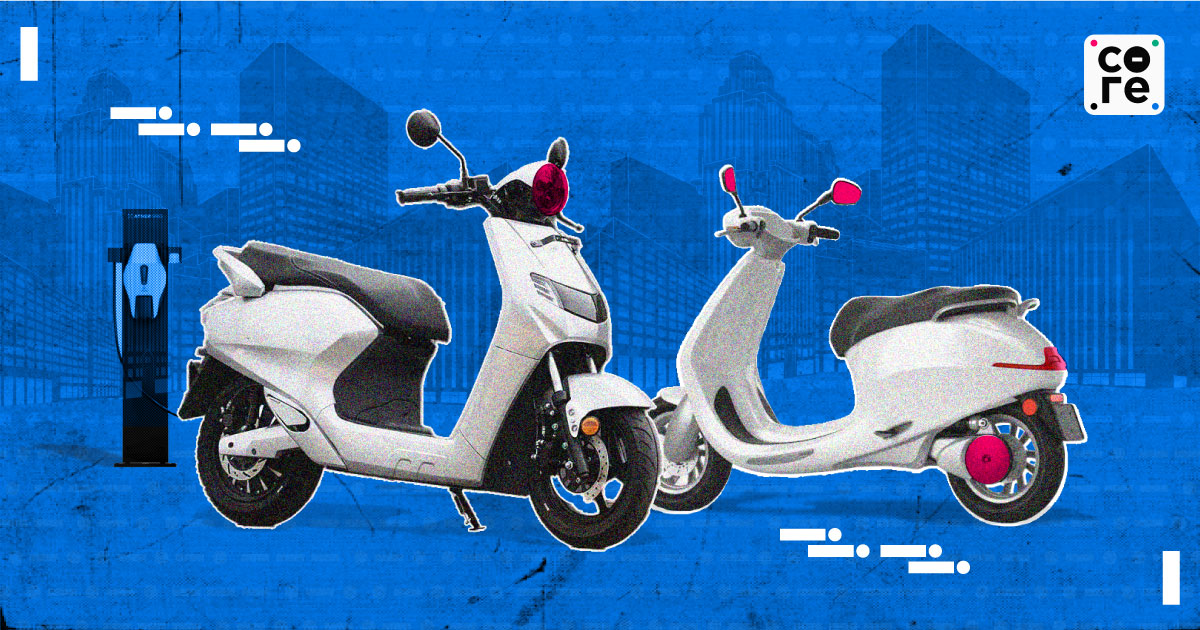
How Free Electricity is Driving Electric Two-Wheelers Sales In Many Parts of India
29 July 2023 5:30 PM IST
Sales of electric two-wheelers (e2W) declined in June, with average daily sales volume slumping by almost 62%, from around 3,395 units a day in May to 1,271 units per day in June. This could be attributed to the steep increase in prices, triggered by the reduction of subsidy provided as a part of FAME II by the Centre.
Presently, e2Ws account for about 7.7% of the overall two-wheeler sales in India and close to 1.5 million units were dispatched in May. The proportion declined in June, leading to several interesting questions: is cost key to consumers choosing e2Ws over the petrol versions?
Were e2Ws cannibalising the market share of the petrol version or craving new market space? How will the decline impact the future given e2Ws' strategic role in reducing the carbon footprint and usage of fossil fuels?
In this conversation with The Core founder and financial journalist Govindraj Ethiraj, Nikunj Sanghi, the former president of the Federation of Automobile Dealers Association, explains the value proposition and tells us why the shift to EV is here to stay.
Here are some edited excerpts of the interview:
Govindraj Ethiraj: In your view, what are the reasons for decreased e2W sales in June?
Nikunj Sanghi: Sales have declined not just because of the increase in prices. The manufacturers sent clear communication to the dealers on the impending rise in prices and encouraged them to pick up vehicles before the rise. So, there was a spike in retail sales in May resulting in a much better average for retailers. So, pre-buying combined with the increase in prices post the revision of the FAME scheme has led to a decrease in numbers.
Govindraj: The price increase is quite high-between Rs10,000 to Rs 40,000 for each of these scooters. How has this rise influenced the customer perspective of e2Ws? Are they willing to pay more, or are they resisting and rethinking their decision?
Nikunj: The increase is sharp. Typically in the automobile segment irrespective of whether it is an EV (electric vehicle) or an ICE (internal combustion engine), any substantial price increase will see an increased resistance resulting in drop down in customers, especially those in the pipeline. So, an intending customer who has been given a quote previously, may resist the price increase and not only rethink but may even decide against buying an e2W now.
However, customers who are considering an e2W purchase presently may be mentally prepared for the revised price band. They are more accepting of the new prices than those already in the pipeline. So this gap of not buying a vehicle will happen even if the increase was less steep. So, with such a sharp price increase the gap is huge.
As to the customer perspective on e2Ws-two-wheelers are the low-hanging fruits in the EV segment. If you consider the total cost of operation of an e2W, buying a two-wheeler even with the price increase is an attractive proposition. Why? The target customer group, especially those at the bottom of the pyramid, considers both the initial acquisition cost and the operation cost carefully to make a purchase.
The operation cost of an e2W is less than 10% of the internal combustion engine and this makes it an extremely attractive proposition. As far as the cost of acquisition is concerned the increase in EMI-with leading financiers now open to financing two-wheelers too–is marginal. For instance, if the cost goes up by Rs 20,000 the increase in EMI would be around Rs 400 per month, which is affordable.
When it comes to the operation costs, I believe, the average monthly fuel expenditure of a customer owning an entry-level two-wheeler is anywhere between Rs2,500-Rs4,000 a month. Electricity costs of charging an e2W is just around Rs500 and it is almost zero in rural areas as electricity is free to rural customers in most states. Therefore, an e2W will not go out of the consideration set of an intending consumer based on the increase in the initial cost of acquisition
Govindraj: You are saying that electricity for use for things such as charging a two-wheeler, basically not for agriculture, is free in many places.
Nikunj: Actually, most have only one connection. There is no separate connection taken for an EV and there is no way for the government to record the purpose of usage of electricity. So, in rural areas, the cost of operating an e2W is almost free.
I realised this during interactions with the customers at my dealership in Alwar. They said although the initial cost may be high, it makes sense for us to buy as electricity is free. They believe that they would recover the initial investment in three years, even if one considers the battery replacement costs.
Govindraj: Where do you see the e2W trajectory in the next six months assuming that subsidies and prices remain as they are?
Nikunj: The sales will climb back. However, the growth will be slow for two reasons. Customers will take time to adjust and accept the new price band given the sharp increase. Secondly, financiers will need time to rework their schemes. They will have to rethink because the battery accounts for almost half the vehicle cost, and any damage or replacement of it will hamper recovery. However, I am fairly confident that sales of e2ws will go back to the original numbers but may take some time.
Govindraj: The government cut back subsidies because it found some e2W companies had misused subsidies. Should Indian auto, especially e2Ws learn to live without subsidies?
Nikunj: The government had its reasons for reducing subsidies. However, the EVs do require government support and that has been the global experience. The government will need to reconsider the FAME scheme after achieving the desired level of industry discipline as developing an ecosystem for EVs without government support will be difficult.

